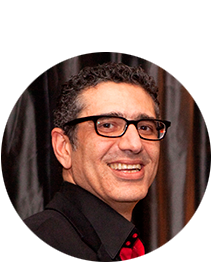Better surgical adhesive and a gene that regulates division in heart cells
Also this week MedZine brings you the latest medical news on various medical specialisms. In this editorial two striking studies are highlighted. The first describes the development of a new microneedle adhesive for use in surgery. The second study identifies a gene, Meis1, which is important in the production of new heart cells.
Swelling microneedle adhesive
In surgery achieving adhesion to soft tissues is a challenge. The use of chemical substances to glue tissue together often induces immune responses that can damage the tissue. Surgical staples can lead to infection and locally put a lot of stress on the tissue. In addition, the removal causes damage to tissues. Karp and colleagues therefore search for an alternative. In their publication in Nature Communications they describe a swelling microneedle adhesive. This adhesive consists of cone-shaped needles. These have a stiff plastic core and a tip that is rigid in its dry state, but swells upon contact with water. These needles can penetrate tissue easily and provide a continuous contact with the tissue. The adhesive strength is 3.5 times increased compared to surgical staples. The researchers found inspiration by a fish parasite. Pomphorhynchus laevis swells its proboscis (a tubular feeding and sucking organ) to attach to its host’s intestinal wall and this mechanism was translated to a bed of microneedle adhesives. In addition to being a strong adhesive, this new way of attaching soft tissues is also less prone to infection and cause little damage to the tissue at removal.
Meis1 is regulating the production of new heart cells
A study in Nature uncovers a gene that is important in the loss of regenerative capacity of the heart after birth. The neonatal heart can regenerate after injury through cardiomyocyte proliferation. However, this capacity is rapidly lost within seven days after birth. How this stop in proliferation called cell cycle arrest is regulated is unclear. Sadek and colleagues identify Meis1 as a critical regulator of the cardiomyocyte cell cycle. The researchers deleted Meis1 in mouse cardiomyocytes and this extended the postnatal time in which proliferation was possible. In addition, this lead to activation of cardiomyocyte mitosis in the adult heart. The opposite effects were observed after overexpression of Meis1. These findings show that Meis1 is a regulator of cardiomyocyte proliferation and suggest Meis1 as a potential therapeutic target for heart regeneration.
Source: Nature Communications, Nature and News-Medical







